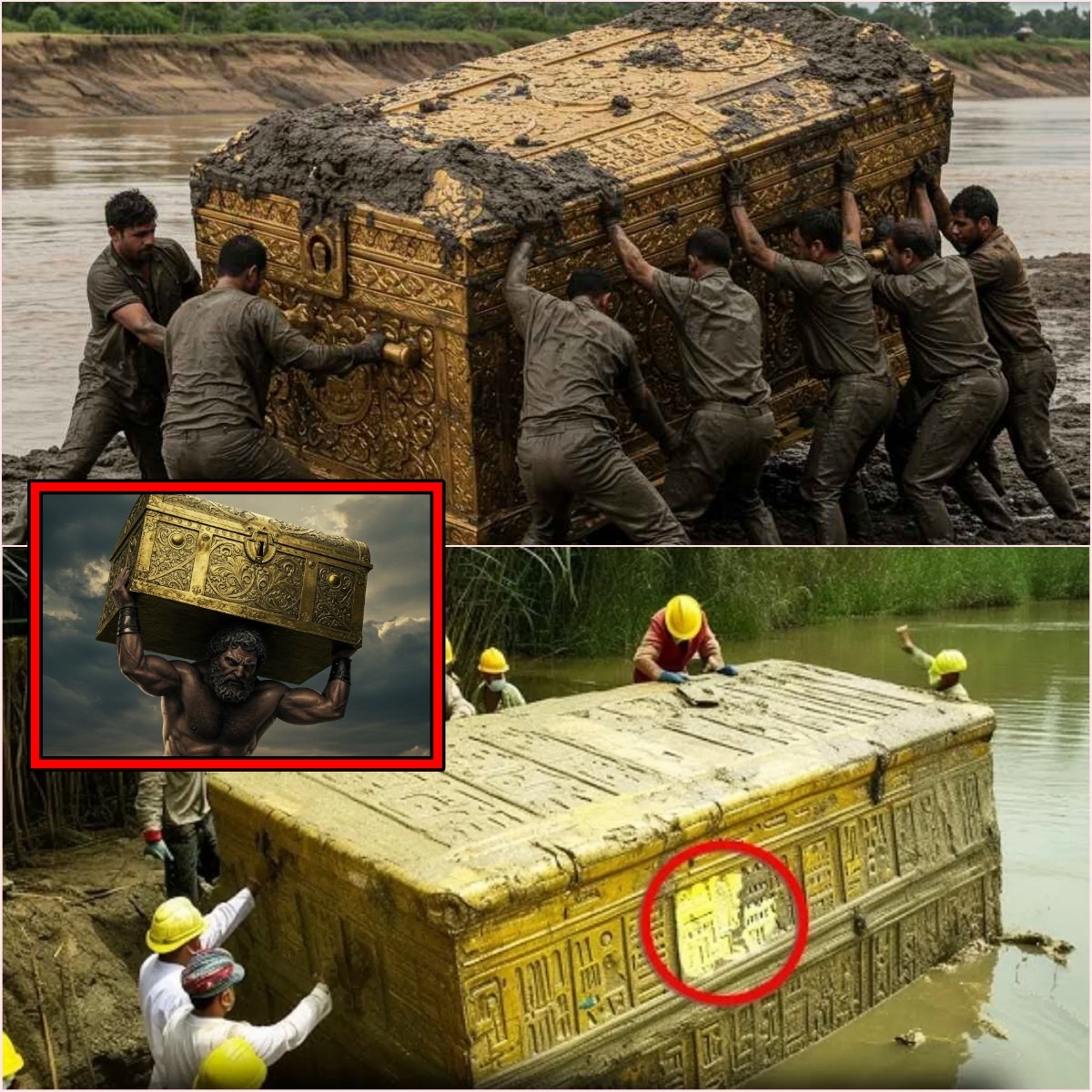The Nile’s Hidden Treasure: Could This Be the Relic of Titan Atlas?

The Nile River, long celebrated as a cradle of ancient civilizations, continues to guard secrets that captivate archaeologists and historians alike. Recently, a remarkable discovery emerged from its mysterious depths: an ancient chest, intricately carved and weathered by centuries, raising tantalizing questions about its origins and purpose. Speculation abounds that this might be the long-lost relic of the Titan Atlas, a mythical figure renowned for strength and endurance. Whether myth or history, the discovery bridges legend and archaeology, offering a rare glimpse into the mysteries of the ancient world.
Unearthing the Chest

The chest’s ornate carvings immediately drew attention. Each motif seems deliberate, hinting at a story long forgotten. Experts believe that the designs could contain symbolic meanings, possibly representing strength, endurance, or protective rituals associated with powerful figures from mythology. Its weathered wood indicates remarkable preservation despite centuries underwater, suggesting it may have been intentionally hidden, awaiting rediscovery by the modern world.
Archaeologists are meticulously examining every inch of the chest. Potential inscriptions are being analyzed, with hopes of decoding messages left by ancient craftsmen or chroniclers. Researchers are also investigating whether the chest contains additional artifacts, which could shed light on trade, cultural exchange, or ceremonial practices along the Nile. Each discovery layer enriches our understanding of the interplay between history and myth in this legendary region.
Connecting Myth and History
The suggestion that this relic may be tied to the Titan Atlas captures the imagination. In Greek mythology, Atlas bore the weight of the heavens, a figure embodying endurance and unyielding strength. Linking a physical artifact to this mythical narrative raises profound questions: Was the chest a tribute to such legendary ideals, or did its creators imbue it with symbolic power to honor rulers or gods? Regardless of the answer, the connection invites us to explore how myths influenced material culture and inspired objects of extraordinary craftsmanship.

Beyond mythology, the chest may reveal insights into the Nile’s ancient civilizations. Its construction, carvings, and possible contents provide evidence of local artistry, technological skill, and cultural priorities. As researchers decode its secrets, the chest becomes a tangible bridge between storytelling, symbolism, and historical reality, offering a multidimensional understanding of the past.
A Reminder of the Nile’s Enduring Mysteries
The discovery underscores that the Nile is far from fully explored. Beneath its waters lie countless artifacts, tombs, and relics, each holding stories waiting to be told. This chest, whether directly tied to Atlas or not, demonstrates the river’s role as a custodian of history, preserving objects that can challenge our assumptions and deepen our appreciation of ancient societies.
Conclusion
The Nile’s hidden treasure is more than an artifact—it is a portal into a world where history, myth, and mystery converge. The potential link to the Titan Atlas, combined with its exquisite craftsmanship and enigmatic inscriptions, makes it one of the most compelling discoveries in recent years. As archaeologists continue to investigate, this relic promises to illuminate forgotten eras, connecting modern observers with the enduring power and wonder of the ancient world.











